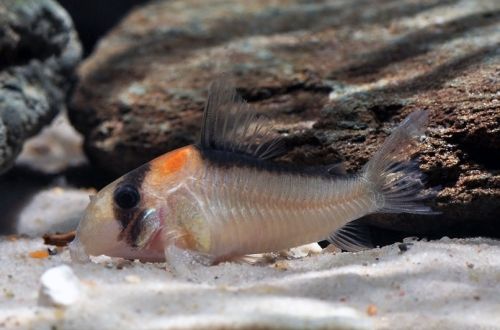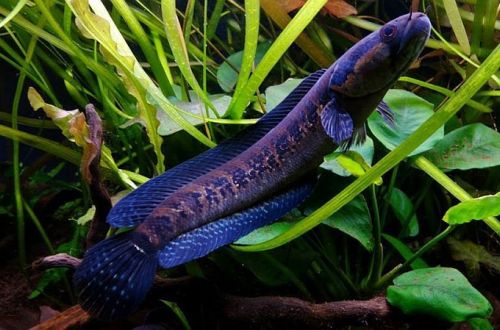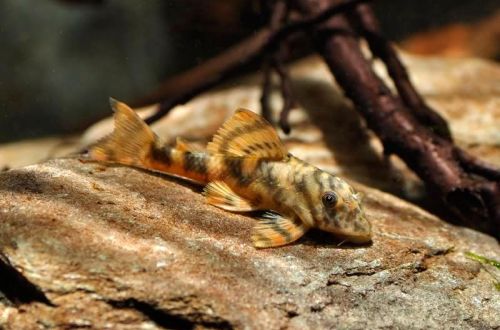
Asian banjo catfish
The Asian banjo catfish, scientific name Acrochordonichthys rugosus, belongs to the Akysidae family. This type of catfish is popular for its original and variable body color. Under a number of conditions, it is unpretentious and easy to maintain, however, it is not recommended for beginner aquarists.

Contents
Habitat
Comes from Southeast Asia. It is found on the islands of Sumatra, Kalimantan, as well as peninsular Malaysia and southern Thailand. Inhabits shallow fast-flowing rivers and streams with clear water with sand and rock substrates. Prefers to hide under snags and scours under boulders.
Brief information:
- The volume of the aquarium – from 50 liters.
- Temperature – 17-24°C
- Value pH — 5.0–7.0
- Water hardness – 0–10 dGH
- Substrate type — stony
- Lighting – any
- Brackish water – no
- Water movement – moderate or strong
- The size of the fish is 10–11 cm.
- Nutrition – meat products
- Temperament – conditionally peaceful
- Content alone or in a group
Description
Adults reach 10–11 cm in length. Catfish has an elongated tail part of the body and a wide flat head. The pectoral and dorsal fins have thick, pointed first rays resembling spikes and are designed to protect against predators. The same purpose is served by numerous thorns-thorns, located in lines along the entire body. The coloration can be very different even in fish that are closely related and collected from the same section of the river. The main palette consists of dark gray, brown and pale yellow colors.
Food
In nature, it is an ambush predator, attacking small fish from a hiding place. In a home aquarium, it will accept fresh or frozen pieces of fish meat, shrimp, mussels, small earthworms, large bloodworms, etc. On occasion, it will definitely grab a small neighbor in the aquarium. Catfish usually do not swim along the bottom in search of food, but wait for it to appear right in front of it. This feature should be taken into account when feeding, feeding food directly above its shelter.
Maintenance and care, arrangement of the aquarium
The Asian banjo catfish leads a sedentary lifestyle, so it may well be content with an aquarium of 60 liters or more. The design uses a rocky substrate, large boulders, driftwood. From the latter form shelters. Aquatic plants are not required, if you wish, you should use artificial vegetation, or purchase unpretentious varieties that can grow on a woody surface. For example, anubias, pterygoid microsorum, krinum, bucephalandra, etc. can grow on snags.
When keeping, it is important to provide clean and oxygen-rich water. This task is usually handled by a productive filtration and aeration system. However, regular maintenance of the aquarium should not be neglected. At a minimum, part of the water should be replaced weekly (30-50% of the volume) with fresh water and organic waste (excrement, leftover feed) should be removed regularly.
Behavior and Compatibility
Despite its largely predatory nature, it is a rather peaceful and non-aggressive fish. Able to get along with other species of comparable size that live in the water column or near the surface. It is dangerous for very small inhabitants of the aquarium. It is also worth avoiding territorial large fish that can attack catfish. In this situation, the risk of poisoning is high, more about this in the Description block.
Fish diseases
Being in favorable conditions is rarely accompanied by a deterioration in the health of fish. The occurrence of a particular disease will indicate problems in the content: dirty water, poor quality food, injuries, etc. As a rule, eliminating the cause leads to recovery, however, sometimes you will have to take medication. Read more about symptoms and treatments in the Aquarium Fish Diseases section.





